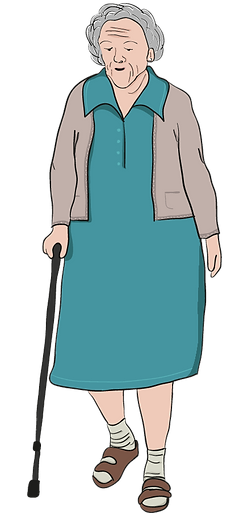
Wanderlust
Wanderlust is an app that connects older adults with younger people from their community so they can go for a walk together.
I started this project during the IDEO U course From Ideas to Action, and continued working on it to participate in the OpenIDEO Fall Prevention Challenge. Out of 205 participating ideas, Wanderlust was selected in the Top 7. Because of my performarce in the course and the challenge, OpenIDEO asked me to mentor the prototyping process of a finalist project in another challenge.
My goal with Wanderlust was to reduce the risk of falls amongst older adults by creating a solution that did not make evident the social stigma they face when, due to health issues, they need walking aids. For this project, I conducted research and tested initial prototypes.
Valentina Sierra
Date
Mar. - May. 2017


Wanderlust connects older adults, their caregivers and relatives with people from their communities who are willing to go with seniors for a walk and take care of them in the meantime, especially by avoiding them to fall as they assist them with climbing steps, identifying and walking through uneven surfaces and avoiding slippery surfaces or objects they could trip with.
Thus, Wanderlust allows older adults to have an active life both physically and socially. It also improves the life of caretakers or relatives who fear that the older adult might fall when he or she is outside walking alone.
The caregiver, relative or the older adult himself requests a walking companion through the app. The app is also used by walking companions who are young people with spare time, need occasional jobs and enjoy spending time with older people.
Personas

Agnes
84 years old
Agnes used to be an active woman but 2 years ago she hurt her hip when she tripped with a curb and fell. She had to go to the hospital, attend sessions of physical therapy and now walks with a cane. She felt ashamed of her accident and since the recovery process was long and painful, she is afraid of falling again. Now Agnes avoids going outside and her social life and muscle strength have deteriorated.

Michael
50 years old
Michael is Agnes’ son. He is a lawyer and lives 3 hours away from his mother. He would like her to be more active, but he is aware of her health issues and worries that she may fall again when she goes outside by herself. Although he cannot visit her often, he calls her to check on her a couple of times per week.

Megan
22 years old
Megan is a psychology student. Sometimes she is short on money to buy study books or go out with her friends. She has worked as a babysitter and would like to have some extra money, but although she has some free time during the week, it is not enough to get a full-time job.
How it Works

01
Megan creates a profile as a Walking Companion. She is asked for some personal information, times she is available and some details for a security check.

02
Michael and his mom create a profile for her. They specify if she uses a walking aid, the kind of assistance she needs when walking, and then they post a walk request.

03
Megan checks the walkers needed in her area and applies to Michael’s post. She sees details like location, time and the kind of help she should offer during the walk.

04
Michael gets a notification and checks Megan’s profile. He and his mom read the reviews written by others and decide to accept Megan for the walk with Agnes.

05
Megan picks Agnes up and Michael gets a notification. During the walk, she holds Agnes by the arm and helps her when climbing steps as Michael asked.

06
When the walk is over, Wanderlust sends a notification to Michael so he can check the journey details and proceed to checkout.
Process
Research
I conducted interviews with older adults and nurses in a nursing home and I found out that there is a social stigma associated with physical walking aids (canes, walkers, rollers, etc). When older adults first have to use one, they feel vulnerable as they can not properly walk by themselves anymore and it is evident for their friends and family that their health is deteriorating. As a result, they prefer not to go outside as often as they used to. This decreases their physical and social activity, leading to more health issues.
Moreover, falls among older adults are often caused by uneven surfaces or because they trip on objects. These factors, that can be easily avoided by a younger person, become a risk for older adults as they lose balance, sight and muscle strength, and their reflexes get slower.







Prototypes
I tested two prototypes. The first one was a paper version of the app that I used to start a conversation about the project with caregivers and young people. This helped me to gather feedback about the importance of creating mechanisms to assure that the young person is trustworthy so caregivers feel comfortable with him or her taking proper care of the older person.
With the second prototype, I wanted to explore what challenges people would encounter during the walk and what precautions were needed to reduce the risk of falls. Leonor is a 93 years old woman who lives in a nursing home and due to mobility and memory issues, she cannot go out by herself. We went for a walk with a nurse who gave general indications on how to assist Leonor when needed. These indications were included in the app so walking companions know how to assist seniors.



© All Rights Reserved. 2023